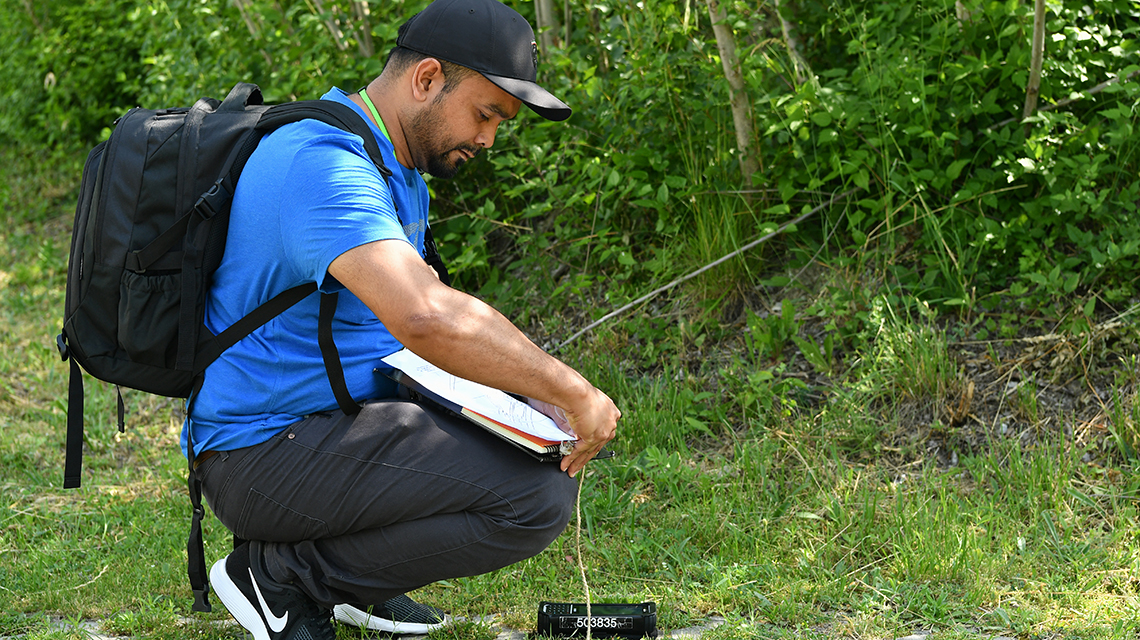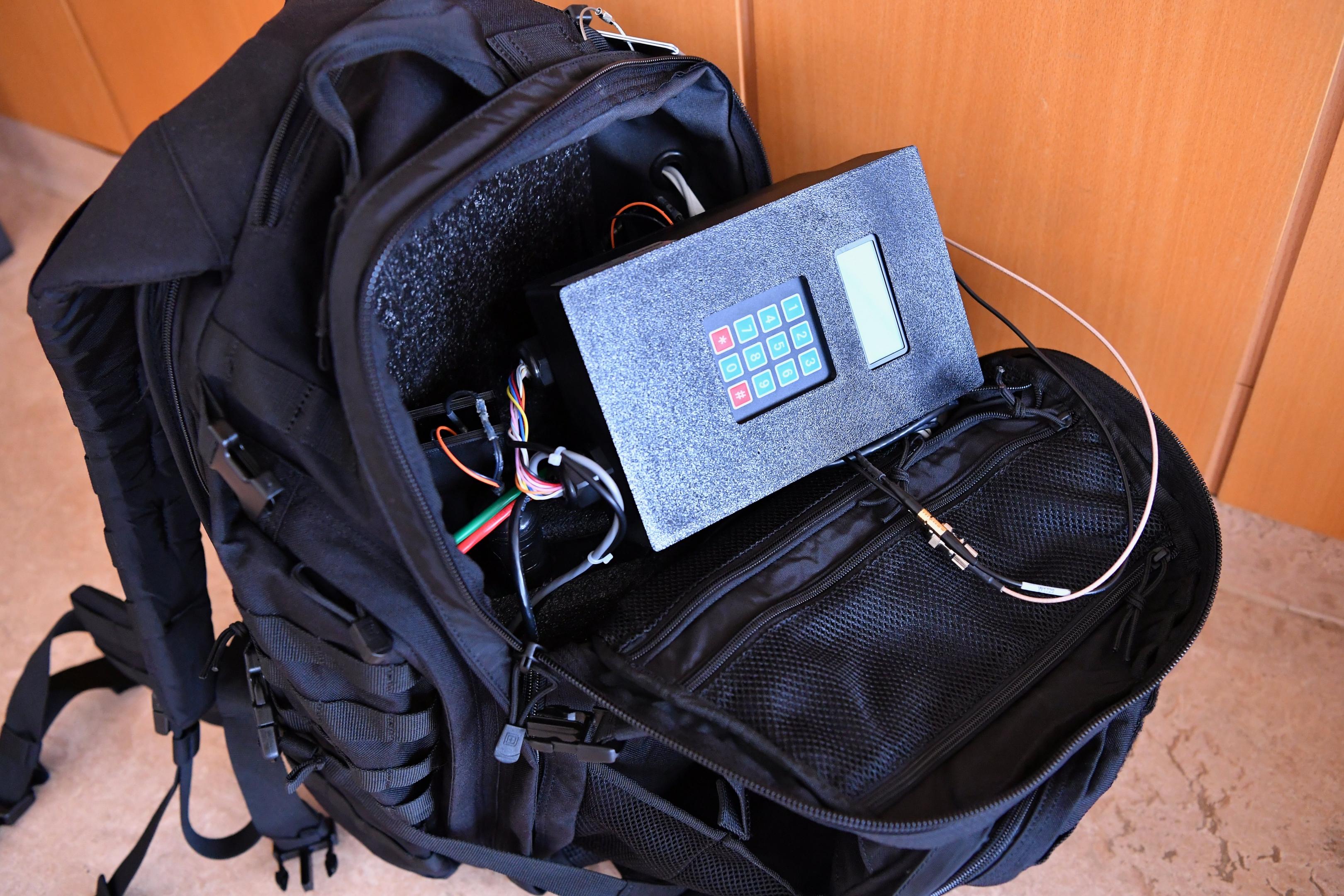
If you would like to learn more about the IAEA’s work, sign up for our weekly updates containing our most important news, multimedia and more.
Equipped and ready to detect
Technology for nuclear security
Joanne Liou

An expert tests a radiation detection backpack. (Photo: D. Calma/IAEA)
Blending into the crowd, a nuclear security officer takes cues from a Bluetooth-connected earphone.
“Go left… Continue straight.”
Just moments earlier, the detection system embedded in the officer’s backpack was triggered by a spike on the radiation monitor. On the outside, the backpack looks generic, but, on the inside, it is outfitted with a device to detect the presence of potentially harmful radioactive elements, as well as to identify their source.
Having access to such equipment is an invaluable and cost-efficient way of scaling up our detection capabilities whenever we need to.
“Radiation detection equipment is used to locate nuclear and other radioactive material that is unintentionally lost or is stolen and being used for malicious purposes,” said Henry Adams, a nuclear security officer at the IAEA specializing in equipment and instrumentation. “If such material turns up at a major public event, for example, it could expose people and the environment to the harmful effects of ionizing radiation and cause severe political and social consequences.”
Many countries work with the IAEA to find the technology that best fits their strategic goals and national nuclear security regime. Since 2009, the IAEA has loaned authorities worldwide a range of nuclear security equipment, including personal radiation detectors and radionuclide identification devices.
This equipment complements other nuclear security systems and measures related to, among others, physical protection, legislation and regulation. These systems and measures are how countries work to prevent, detect and respond to the threat of malicious use of nuclear or other radioactive material.
High-tech backpacks
Radiation detection backpacks are one of the latest additions to the IAEA’s inventory of nuclear security equipment. Introduced in 2017, these backpacks can provide a larger area of detection and identification than many other mobile tools, owing to their higher sensitivity detection system. A single backpack expands the detection footprint from centimetres to several metres.
The backpacks’ scintillation detectors can categorize material as industrial, medical, naturally occurring and non-threatening radioactive material (NORM) or a special nuclear material that could be considered a threat. In under 30 seconds, the backpacks can generally identify the type of source within a one-to-two-metre distance. The average 12-hour battery life allows for in-depth, uninterrupted activity.
Wearing the 14-kilogram backpacks, local authorities can collect data over a large area and search for any radioactive sources that may have been lost or stolen and could be used with malicious intent. Before deployment, security personnel are trained to operate and perform general maintenance of the equipment.
“Backpacks are a primary tool for radiation detection in an operational sense because of their versatility and built-in identification capability,” Adams said. Given their mobility, backpacks are intended to cover a large area, he added, as opposed to stationary monitors that are utilized at ports and borders.
Experts in over 20 countries have used these backpacks for various nuclear security activities. In some cases, this has been for major public events, such as the 2019 World Youth Day held in Panama, the 2018 Asian Games held in Indonesia and the G20 Summit held in Argentina in 2018.
“With the assistance of the IAEA, we were able to augment our security arrangements by deploying detection equipment as a part of our overall security strategy around World Youth Day,” said Lieutenant Colonel Jorge Gobea, Head of Panama’s Joint Security Task Force formed to secure the 2019 World Youth Day. “Having access to such equipment is an invaluable and cost-efficient way of scaling up our detection capabilities whenever we need to.” (Read more about nuclear security at major public events).
Refine and improve
Radiation detection backpacks come in different sizes and with various specifications. To help identify backpacks to fit various country needs, practitioners came together at an IAEA Technical Meeting in June 2019 to share their experiences of deploying, testing and maintaining radiation detection backpacks. They used data from a series of experiments designed to compare the performance of more than a dozen different backpacks with different parameters based on various national nuclear security priorities, both event-specific and overall.
“It is about balance and prioritization. Backpack technology has progressed rapidly and includes many advanced features,” said Tyrone Harris, a nuclear security officer at the IAEA. “However, not all features may be necessary for all countries, and each feature can add weight to an already heavy piece of equipment.”


